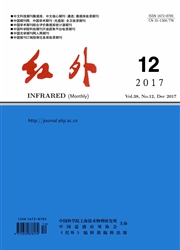

 中文摘要:
中文摘要:
研究了在电转染过程中利用红外光谱分析技术进行细胞破损检测的可行性.电转染是在进行基因工程实验时利用电穿孔方法将细胞外的基因导入细胞内部并使其表达的一种常用手段.细胞在电转染过程中会因为受到强烈的外界电压刺激而穿孔破损.分别获取了猪肾细胞破损前后的红外光谱,并结合计算机软件对2200~2600 cm-1区域的光谱数据进行了二阶导数分析处理.在此区域内,发现细胞破损前后的特征峰区别明显:破损细胞特征峰的峰形尖锐且强度大,而正常细胞的峰形较宽且相对强度较弱.这一结果为鉴别细胞破损提供了依据,并为进一步运用红外光谱技术研究细胞破损提供了参考.
 英文摘要:
英文摘要:
The feasibility of using an infrared spectral analysis technology to detect cell disruption in the process of electric transfection is studied. Electric transfection is a means commonly used in genetic engineering experiments. It usually uses an electroporation method to incorporate the genes outside a cell into the cell and let them express. In the process of electric transfection, a cell may be perforated and damaged due to the stimulation of strong external voltage. The infrared spectra of porcine kidney cells are obtained before and after their damage respectively. The spectral data in the region from 2200 cm-1 to 2600 cm-1 are analyzed through second derivation combined with a computer software. It is found that the characteristic peaks of the cells before and after their damage are very different in this spectral region. The shape of the characteristic peak of the damaged cell is sharpen and intensive whilethe shape of the characteristic peak of the normal cell is wider and its intensity is low. This result provides the basis for the identification of cell damage and is of reference value to the further use ofinfrared spectroscopy in cell damage research.
 同期刊论文项目
同期刊论文项目
 同项目期刊论文
同项目期刊论文
 期刊信息
期刊信息
